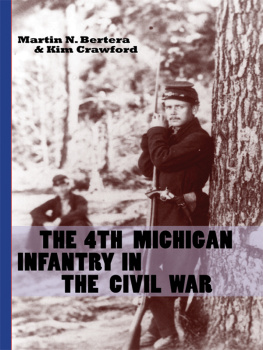THE CIVIL WAR LETTERS OF
COLONEL HANS CHRISTIAN HEG

A NORWEGIAN REGIMENT IN THE AMERICAN CIVIL WAR

Edited by THEODORE C. BLEGEN



The e-book for The Civil War Letters of Hans Christian Heg is produced with the assistance of a Sons of Norway Foundation cultural heritage grant.
1936 by the Norwegian-American Historical Association. All rights reserved. No part of this book may be used or reproduced in any manner whatsoever without written permission except in the case of brief quotations embodied in critical articles and reviews. For information, write to the Norwegian-American Historical Association, 1510 St. Olaf Avenue, Northfield, MN 55057-1097.
www.mhspress.org
The Minnesota Historical Society Press is a member of the Association of American University Presses.
Manufactured in the United States of America
International Standard Book Number
ISBN: 978-0-87351-956-4 (paper)
ISBN: 978-0-87351-955-7 (e-book)
This and other Minnesota Historical Society Press books are available from popular e-book vendors.
PREFACE
Colonel Hans Christian Heg of the Norwegian pioneer settlement at Muskego, Wisconsin, led a regiment of immigrant soldiers, recruited chiefly in the Badger State but also in Illinois, Iowa, and Minnesota, to the battlefields of the South in the Civil War. This volume is made up mainly of the letters, hitherto unpublished, that he wrote to his wife and children from January 16, 1862, shortly after the organization of the Fifteenth Wisconsin Volunteer Infantry, to September 18, 1863, the day before the battle of Chickamauga, in which, as the commander of a brigade, he met his death. Some of these personal records are presented in full, some in the form of abstracts, and some merely through excerpts. Supplementing them are a few communications from Colonel Heg that found their way into the columns of a Milwaukee newspaper. A biographical essay supplies a background for the interpretation of the documents.
One group of Heg letters, comprising about ninety items, is in the possession of the State Historical Society of Wisconsin. A larger body of Heg letters some 130 in number is owned by Mrs. A. R. Van Doren of Summit, New Jersey, a great-granddaughter of the colonel. Through the courtesy of the State Historical Society of Wisconsin and of Mrs. Van Doren, all these letters have been made available for transcription and publication by the Norwegian-American Historical Association. For this privilege, the Association proffers its sincere appreciation.
The Association desires also to express its hearty thanks to Mr. Magnus Swenson of Madison, Wisconsin, Mr. Arthur Andersen of Winnetka, Illinois, Mr. J. A. Holmboe of Oklahoma City, Oklahoma, Mr. Olaf Halvorsen of Huntington Park, California, Mr. O. M. Oleson of Fort Dodge, Iowa, and Mr. G. G. Martin of Pacific Palisades, California, who subscribed generously to a special fund that made possible the printing of this volume.
In the course of the preparation of the book, valuable assistance has been received from Dr. Knut Gjerset, curator of the Norwegian-American Historical Museum, Decorah, Iowa; Miss Alice E. Smith, curator of manuscripts, State Historical Society of Wisconsin, Madison; Mr. Waldemar Ager of Eau Claire, Wisconsin, the author of Oberst Heg og Hans Gutter and of many articles on the Fifteenth Wisconsin; Mr. Albert O. Barton of Madison, Wisconsin; Mr. Birger Osland of Chicago; Mr. Karl T. Jacobsen, librarian, Luther College Library, Decorah, Iowa; Dr. Luther M. Kuhns, historian of the Evangelical Lutheran Synod of Nebraska, Omaha; Professor Agnes M. Larson of St. Olaf College, Northfield, Minnesota; Mr. Kenneth M. Stampp of the University of Wisconsin; Mr. Herbert Kahler of the National Park Service, Fort Oglethorpe, Georgia; Mrs. H. L. Howard of Chicago, a niece of Harvey Britton, a sergeant in the Fifteenth Wisconsin; and finally Mr. Tollef Sanderson of Harmony, Minnesota, and his mother, Mrs. Sophia Jacobson Sanderson, who is a niece of Mrs. Hans C. Heg. I desire to express my gratitude for this assistance, which brought to light several photographs of Colonel and Mrs. Heg and other interesting pictures, made available for my use transcripts of various letters and articles published in early Wisconsin newspapers, furnished biographical material on the Heg family, and supplied many other useful items of information. Finally, I may be permitted to make a bow of appreciation to Mrs. Arthur Katz of St. Paul, who served as my editorial assistant, compiled the index, and helped me in that harrowing drudgery euphemistically called seeing the book through the press.
THEODORE C. BLEGEN
UNIVERSITY OF MINNESOTA
MINNEAPOLIS
ILLUSTRATIONS

THE CIVIL WAR LETTERS
OF
COLONEL HANS CHRISTIAN HEG
COLONEL HANS CHRISTIAN HEG
A BIOGRAPHICAL ESSAY
The story of Hans Christian Heg runs from 1829 to 1863. It begins at the hamlet of Lier, near Drammen, in southeastern Norway. It ends on the field of Chickamauga in northern Georgia. Into the intervening thirty-four years are packed a series of varied experiences that link one life with characteristic movements in the epic of America.
The elements in Colonel Hegs career have a wide sweep a boyhood in the Old World, a transatlantic migration, contact with the American westward movement, the taste of frontier life in Wisconsin, identification with a community that cradled some of the more significant developments among an immigrant people, an overland trek to the gold fields of California, life in the mining camps of the West, a return to the community near Lake Michigan, a career in local and state politics, leadership of a regiment of Scandinavian immigrants in the Civil War, and death in a great battle of that war. His achievements are well known among Norwegian-Americans for whom his name is in some sense a symbol of the contribution made to America by their pioneer ancestors but they are little known outside that circle. One will look in vain for his biography in the dictionaries of distinguished Americans. The significance of his career is not to be sought in nation-wide fame or extraordinary achievement. Though he ultimately commanded a brigade in the Civil War, he was, after all, only a minor figure in that gigantic conflict. His importance lies rather in the fact that his life story typifies processes of transition that have marked the lives of thousands of immigrants.
Even among people of his own blood, Heg has been virtually unknown as a personality. He has indeed been accorded the honors of a hero, but appraisal too often has become apotheosis, and with the passing years he has taken on the aspect of a bronze statue. Yet, through all the years since he fell at Chickamauga, his own letters of the Civil War, warm, human, interesting, packed with shrewd observation and detail, and disclosing both his virtues and his faults, have been preserved. These letters, published for the first time in the present volume, tell their own story. They portray the man and soldier, and they record the history of a regiment. They require little amplification or comment, but their meaning and value cannot be fully understood unless they are read in the setting of Hegs career. They constitute the last chapter of a human story. In the light of the earlier chapters the last takes on a significance that it would not possess if it stood alone.
















